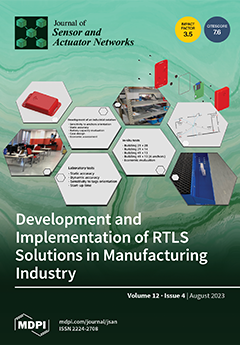Open AccessEditor’s ChoiceArticle
Remote Binaural System (RBS) for Noise Acoustic Monitoring
by
Oscar Acosta, Luis Hermida, Marcelo Herrera, Carlos Montenegro, Elvis Gaona, Mateo Bejarano, Kevin Gordillo, Ignacio Pavón and Cesar Asensio
Cited by 1 | Viewed by 2783
Abstract
The recent emergence of advanced information technologies such as cloud computing, artificial intelligence, and data science has improved and optimized various processes in acoustics with potential real-world applications. Noise monitoring tasks on large terrains can be captured using an array of sound level
[...] Read more.
The recent emergence of advanced information technologies such as cloud computing, artificial intelligence, and data science has improved and optimized various processes in acoustics with potential real-world applications. Noise monitoring tasks on large terrains can be captured using an array of sound level meters. However, current monitoring systems only rely on the knowledge of a singular measured value related to the acoustic energy of the captured signal, leaving aside spatial aspects that complement the perception of noise by the human being. This project presents a system that performs binaural measurements according to subjective human perception. The acoustic characterization in an anechoic chamber is presented, as well as acoustic indicators obtained in the field initially for a short period of time. The main contribution of this work is the construction of a binaural prototype that resembles the human head and which transmits and processes acoustical data on the cloud. The above allows noise level monitoring via binaural hearing rather than a singular capturing device. Likewise, it can be highlighted that the system allows for obtaining spatial acoustic indicators based on the interaural cross-correlation function (IACF), as well as detecting the location of the source on the azimuthal plane.
Full article
►▼
Show Figures





